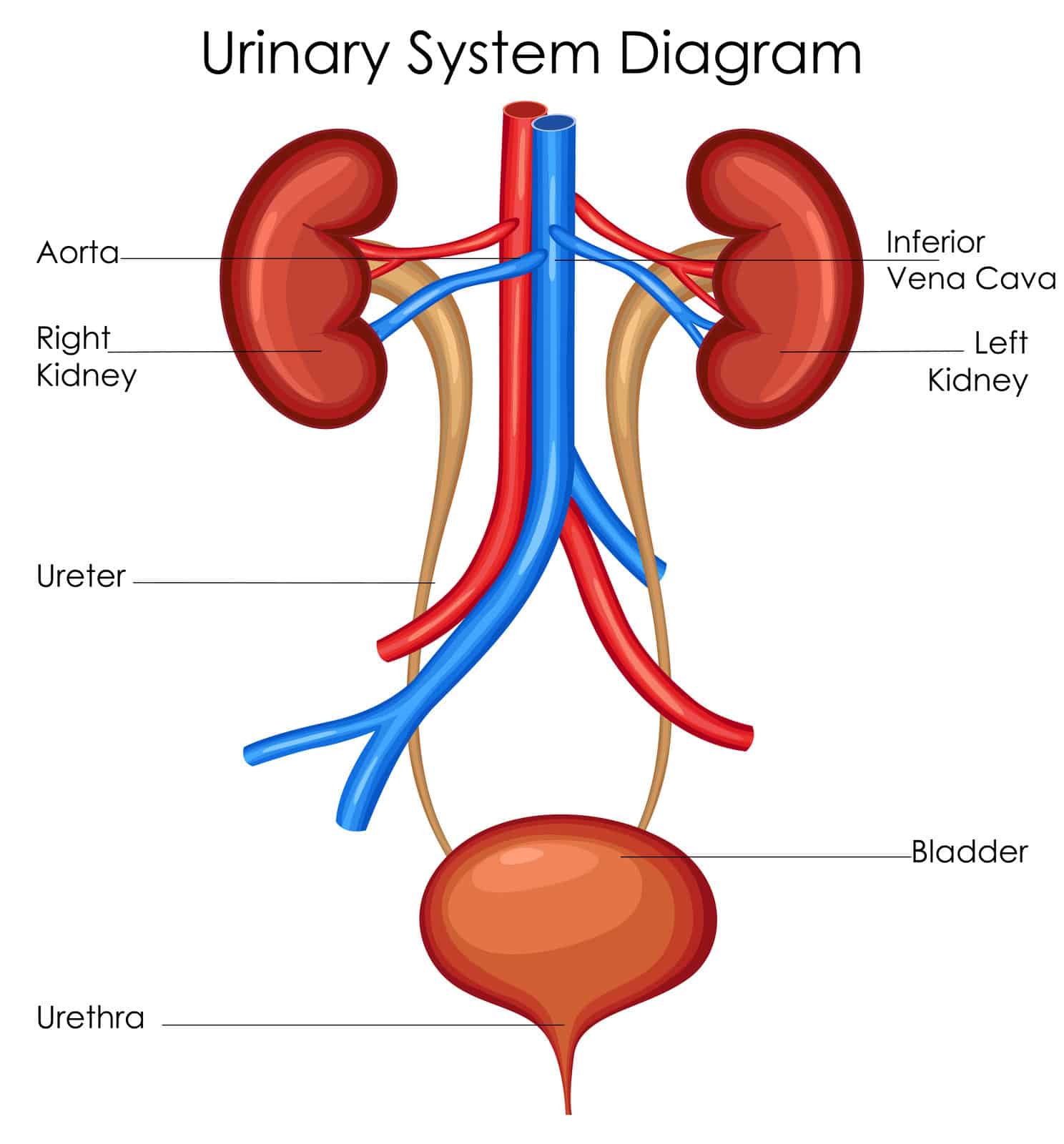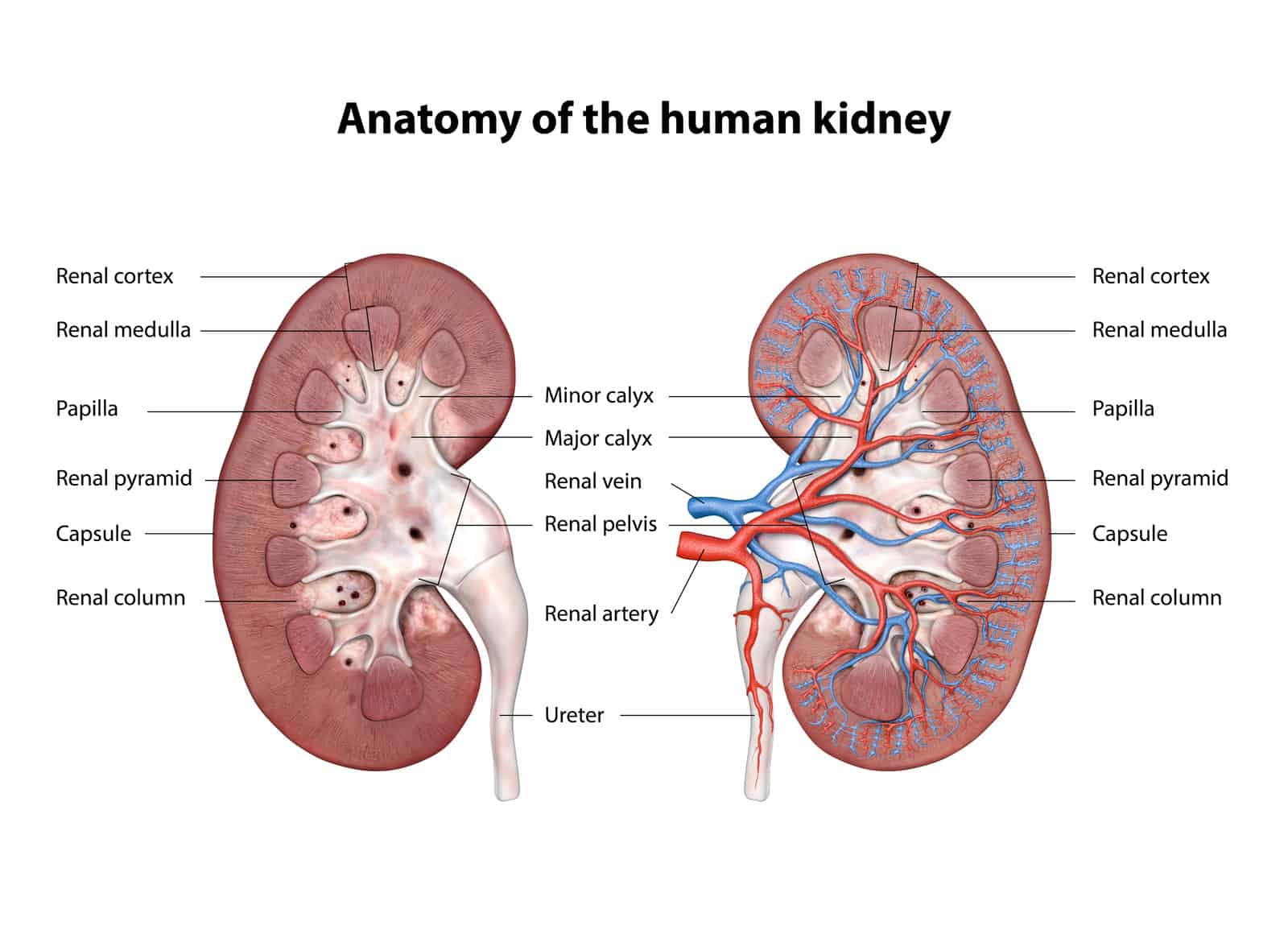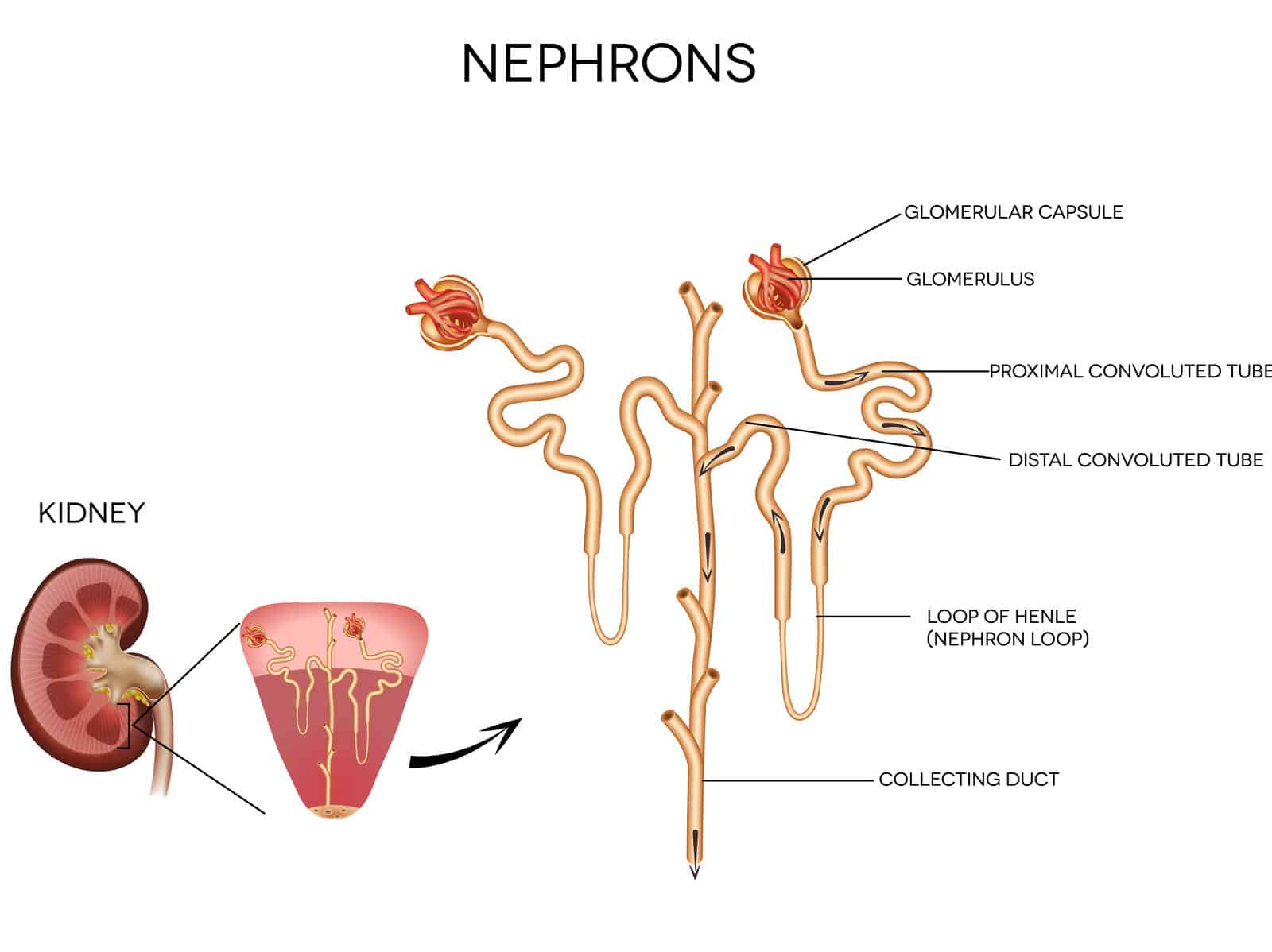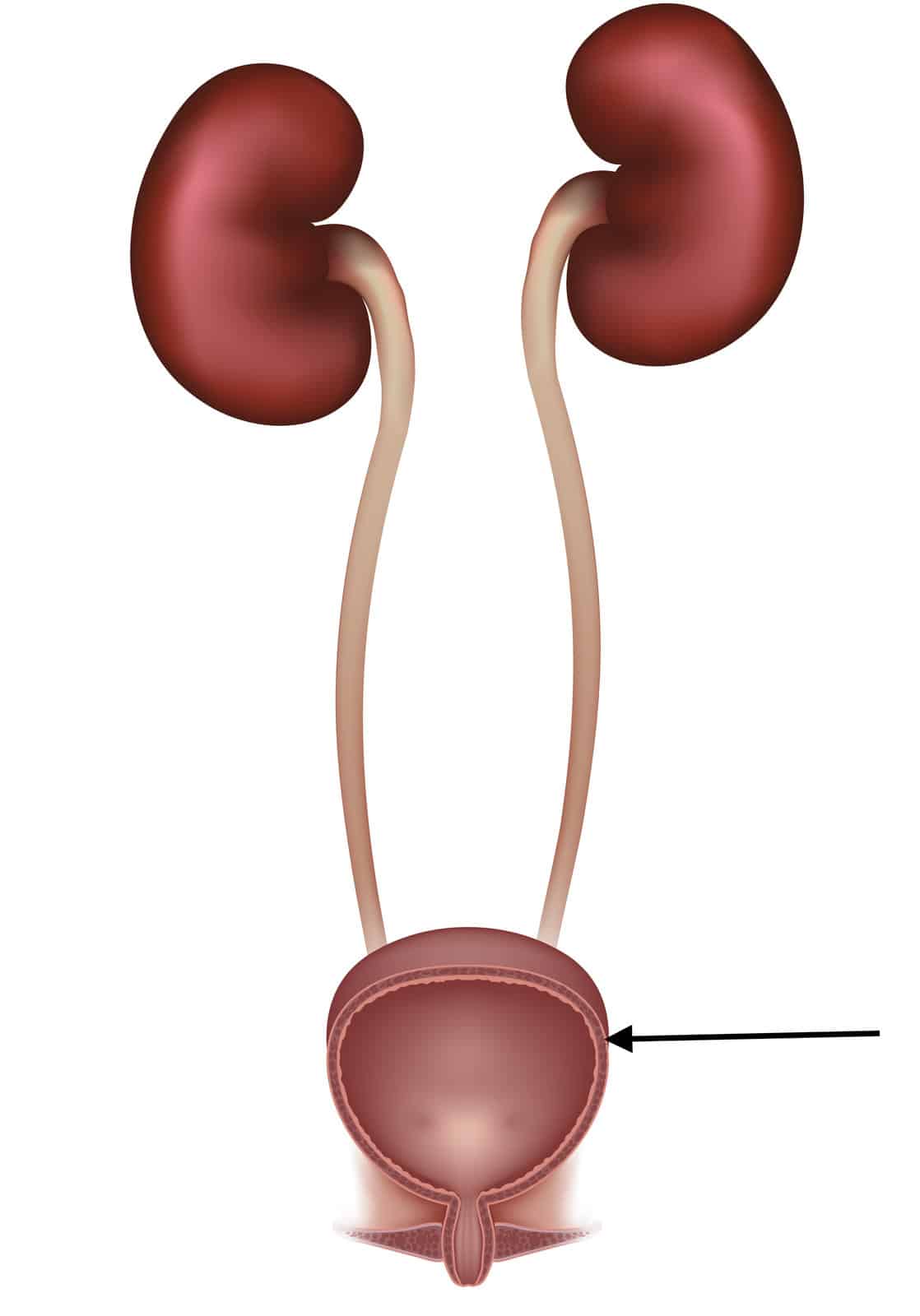
Urinary System: Parts, Function, and 5 Fun Facts
Our body has different ways to get rid of its waste products. The lungs, intestine, skin, and urinary system work in harmony to expel any waste products that might harm you. So, our urinary system is one of the main ways our body uses to wash away toxins. But our urinary system is not just a waste disposal machine. It is way more than that.
In this article, we are going to discover the four parts of the urinary system, its function, how to keep it healthy, and finally, how urine is formed in the urinary system. And at the end, we are going to finish with five fun facts about the urinary system.
Table of content:
- Parts of the Urinary System.
- How Does Urination Occur?
- The Functions of Our Urinary System.
- How is Urine Formed?
- How to Keep Your Urinary System Healthy.
- A Short Quiz on the Topic.
Parts of the Urinary System
Our urinary system is composed of four main structures:
- Two kidneys
- Two ureters
- One urinary bladder
- One urethra
The urine is formed in the kidneys and then travels its way down through the ureters, then to the urinary bladder and finally to the urethra before it gets flushed in the toilette.

1. The Kidneys
We have two kidneys, one on each side of the vertebral column just under the rib cage. Your kidneys are located at the back of your abdomen. They are protected by the lower ribs from behind and are surrounded by pads of fat, which also protect them from any trauma. Each kidney has the shape of a bean and measures 6cm in width, 12cm in length, and 3cm in thickness.
Your kidneys aren’t just organs that form urine and allow us to get rid of waste products. They play a bigger role in keeping your body’s internal environment stable. See the section on the function of our urinary system below to know more about it.
If we take a cross-section of a human kidney, we will find a very well-organized structure.
The kidney is divided from the inside into two main areas;
- The outer cortex.
- The inner medulla.
The medulla is then divided into pyramidal-shaped structures called renal pyramids. The tip of each pyramid is called papillae.
In between these pyramids lie the renal columns, which are considered part of the renal cortex.
An indented area in the medial aspect of each kidney is called the hilum. Through this hilum, the renal artery enters the kidney, and the renal vein also leaves it.

2. The Ureters
In the last section, we stopped at the tip of the renal pyramids. Now, let’s move down the way. Just after the renal papillae, a tubular system emerges that would later form what is called the ureter.
This tubular system progresses through the following structures:
- The minor calyces (the singular of which is the calyx).
- Then, these minor calyces merge together to make the major calyces, which in turn form the renal pelvis.
- Finally, the renal pelvis continues as the ureter.
The ureter is a thin muscular tube about 25cm long. Its function is to transport the urine formed in the kidneys to the next station, which is the urinary bladder. That is why it has muscles in its wall. These muscles contract and relax to propel the urine downward, where it gets stored in the urinary bladder.
It is very dangerous if your urine stays in the ureters for a long time. For example, suppose you have a renal stone, and your ureters can’t expel that urine down to the urinary bladder. In that case, it will cause back pressure on your kidneys and increase the risk of having a urinary tract infection.
3. The Urinary Bladder
The urinary bladder is a hollow organ that looks like a balloon. It lies in the pelvic cavity and acts as a reservoir of your urine. Like the ureter, it also has a smooth muscle layer that allows it to push urine to the next station.
When these muscles relax, your bladder extends to accommodate more urine. And when they contract, they squeeze your urinary bladder and allow it to push the urine into the urethra. It holds the urine until it receives an order from your brain, telling it that it’s an appropriate time to expel that urine.
4. The Urethra
Here we are at the final station your urine travels through your urinary system. The urethra is a thin tube that takes the urine that has been collected by the urinary bladder and moves it to its final destination; The toilette. Your urethra has muscle bands that encircle it tightly like a rubber band. They work as a guard. In fact, it has two guards that control the urine flow through it and prevent any potential leakage. These guards are:
- The internal urethral sphincter.
- The external urethral sphincter.
The internal urethral sphincter lies at the beginning of your urethra (at the end of your urinary bladder). This sphincter contains smooth muscle fibres, which means it is not under your voluntary control. These muscle fibres encircle the urethra tightly like a rubber band.
On the other hand, the external urethral sphincter lies below your internal urethral sphincter. It is composed of skeletal muscles, which means it is under your voluntary control. That is why you can hold your urine for a while if your brain tells you it is not the appropriate time or place to urinate. This sphincter adds another layer of protection against leakage and gives you conscious control over the process of urination.
How Does Urination Occur?
The process of urine formation occurs involuntarily in your kidney. You can’t control how much urine your kidneys form a day. However, you can voluntarily control the process of urination. You can hold your urine in certain situations where you think it is not suitable to empty your bladder. You can also decide to go to the bathroom whenever you want and get rid of that waste.
The process of urination starts with a signal from your urinary bladder when it is full. Then, the process of urination goes as follows:
- The urinary bladder sends a signal to your brain telling it that it is full and needs its help to evacuate the urine it has been storing for a while.
- Then, your brain looks around and sees if the external environment is safe and suitable for that.
- If the external environment is suitable, you go to the bathroom, and your brain sends signals back to your urinary bladder and urethral sphincters.
- These signals cause your bladder to contract to push that urine.
- At the same time, your urethral sphincters relax on receiving those signals. This allows the urine pushed by the bladder to easily navigate its own way down the urethra and out of your body.
- And voila, mission accomplished.
On the other hand, if your brain thinks it is not suitable to go to the bathroom right now, it will send inhibitory signals to your bladder and urethral sphincters. These inhibitory impulses do the opposite on your bladder and sphincters. They tell the urinary bladder to relax to accommodate more urine and contain it inside. At the same time, your urethral sphincters tighten more to prevent any leakage.
This might happen in situations like when you are giving a talk on a stage or fighting with your friends. In these situations, you can hold your urine for a while as you don’t want to go to the bathroom amid a fight or a public speaking event. Your brain saves you in these situations.
The Functions of Our Urinary System
When we talk about the function of our urinary system, we are mainly talking about the kidneys, as they are the primary organ of your urinary system. The other components of the urinary system play a minor role: that is, to transport the urine that the kidneys have formed until it is out of your system.
- Form the urine, which is a waste product.
- Maintain your body’s internal environment in balance; by keeping water, electrolytes (sodium, potassium, calcium, phosphate, etc.), acids, bases and other substances at the correct and optimal amount for your body’s function.
- Help in the production of your RBCs (red blood cells) by secreting a very important hormone called erythropoietin. This hormone is also produced in your liver.
- Share in the activation of vitamin D together with the liver. So, it plays a very pivotal role in your bone health.
- It is concerned with regulating your blood pressure. The kidney plays a very complex role in keeping your blood pressure normal and adjusting it to your body condition.
How is Urine Formed?
The urine is formed of:
- Water.
- Some salts.
- Urea: a waste product that is formed from protein breakdown to be excreted by the kidneys.
- A pigment that gives urine its yellow colour. This pigment is called urochrome.
- Creatinine: This is also a waste product. It results from the normal breakdown of muscles.
- Other metabolic waste products like ammonia and bile products from the liver.
To know how urine is formed, we need to take a close look at the microscopic structure of our kidneys.
We have already talked about the macroscopic picture of the kidney, but the microscopic picture is way more complex and deserves some time to be well understood. Under the microscope, each kidney is formed of over a million functional units called nephrons. These nephrons work independently to form the urine. Each nephron is composed of two main parts:
- The renal glomerulus: This is a group of small blood capillaries collected together in the form of a ball.
- The renal tubule: this tubular system receives blood after being filtered from the glomerulus. It is divided into 4 segments that are connected to each other. These 4 segments are:
- The proximal convoluted tubules.
- The loop of Henle.
- The distal convoluted tubules.
- The collecting ducts.

Now, after knowing the structure of the nephron, we are ready to discuss how urine forms in these complex structures.
- First, The blood gets filtered while it passes through the glomerular capillaries.
- Then, the filtrate moves to the renal tubule to get modified according to your body’s needs. For example, your tubules may increase water absorption if you are dehydrated to keep your blood pressure normal and prevent shock.
- The modification of your urine in the renal tubule is achieved through two main processes:
- Reabsorption: by this process, your renal tubules return important nutrients back to your blood.
- Secretion: Through this process, your renal tubules expel waste products to be excreted out of your body.
- In the end, the urine passes from the collecting ducts to the renal calyces and then out of your kidney down to the ureters.
We know that urine formation is a very complex process, but before you give up, here’s a 3D video that will make it easier for you to get it.
This article discusses in detail the process of urine formation in the urinary system with 3d videos.
What Controls the Amount or Colour of Your Urine?
You may have noticed before that the more you drink water, the more times you go to the bathroom and vice versa. That is because the amount of urine your body produces daily varies depending on several factors.
But wait a minute, we need to know first the characteristic features of normal urine. The normal colour of the urine ranges from transparent pale yellow to deep amber. The normal amount of urine produced by an adult kidney ranges from 750 to 2000 millilitres per day.
These physical features are not constant and do change depending on several factors. For example, the day you drink large amounts of water, your urine colour gets lighter, and its volume increases.
Things That Cause Diuresis (Increase Your Urine Output):
- Some beverages, such as coffee and alcohol.
- Drugs as diuretics.
- Some diseases, such as Diabetes.
- Intake of large amounts of fluid.
Things That Decrease Your Urine Volume (Antidiuretic):
- Hot weather. As it leads to water loss in other ways, such as sweating.
- Inadequate water intake.
- A renal problem such as renal stone or renal failure.
How to Keep Your Urinary System Healthy
Given your urinary system’s countless functions, you must know how to keep it healthy. You can do so in many simple ways.
- Drink an adequate amount of water. There is no fixed amount of water you have to drink each day. We are all different, and the conditions we are put in are also different. So drink whenever your body needs water.
- Eat healthy food.
- For girls, Wipe yourself after urination the right way, from front backwards and not the other way around. This way, you prevent the entry of any bacteria from your bowel into your urinary system and thus reduce the possibility of getting a urinary tract infection.
- Do not neglect or delay your body’s desire to get rid of its waste. Holding your urine for longer periods can negatively affect your urinary system health. It can increase your risk of getting a urinary tract infection.
- Keep a healthy lifestyle. This includes doing regular exercise, quitting smoking or any other harmful habit, and reducing the amount of alcohol you take.
Conclusion
We will finish with five fun facts about the urinary system.
- The colour of your urine can indicate a certain problem inside your body. For example:
- A deep amber-yellow colour means you need to drink more water.
- A darker brownish colour means there is a problem in your liver.
- Red or pinkish urine may indicate the presence of blood in your urine.
- Turbid colour may be a sign of an infection in your urinary system.
- Urinary tract infection is more common in women than in men. That is mainly because women have shorter urethrae, making it easier for women to get infected.
- The right kidney is a bit lower in position than the left kidney. That is because the right kidney lies behind the liver, which displaces it downward.
- The size of your kidney is almost the same as that of your hand fist.
- Your urinary bladder can hold up to half a litre of urine inside its cavity for 2 to 5 hours.
Now, it is time to test yourself out on the urinary system. Ready!
Q1. Which one of these parts of your urinary system is responsible for the formation of urine?
- The ureters.
- The kidneys.
- The urethra.
- The urinary bladder.
Q2. What is the name of the structure pointed at by the black arrow?
- The kidney.
- The ureter.
- The urinary bladder.
- The urethra.

Q3. All the following are things done by your kidneys (urinary system) except:
- Form the urine.
- Keep water balance.
- Secrete some hormones.
- Digest food.
Q4. The outer layer of the kidney in a vertical cross-section is known as:
- Renal pyramid.
- Renal papillae.
- Renal medulla.
- Renal cortex.
Q5. The main organ responsible for regulating your blood pressure is:
- Your heart.
- Your kidney.
- Your liver.
- Your pancreas.
The correct answers
Q1 – 2
Q2 – 3
Q3 – 4
Q4 – 4
Q5 – 2
Want to know more about your cardiovascular system and how your heart works? Check out this article.


Leave a Reply